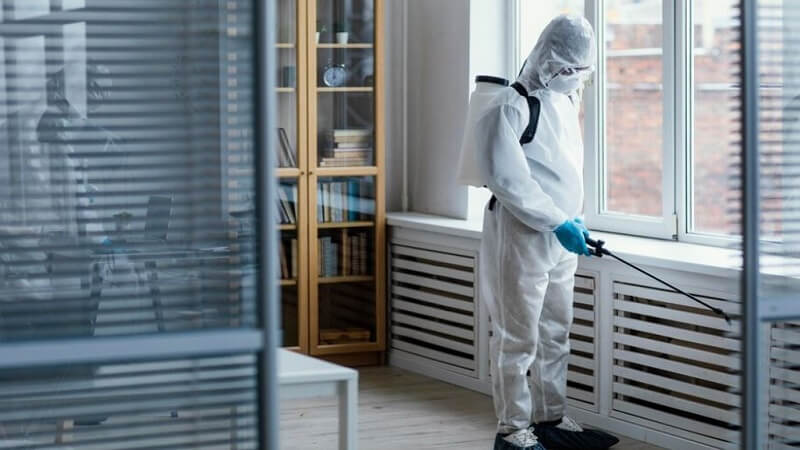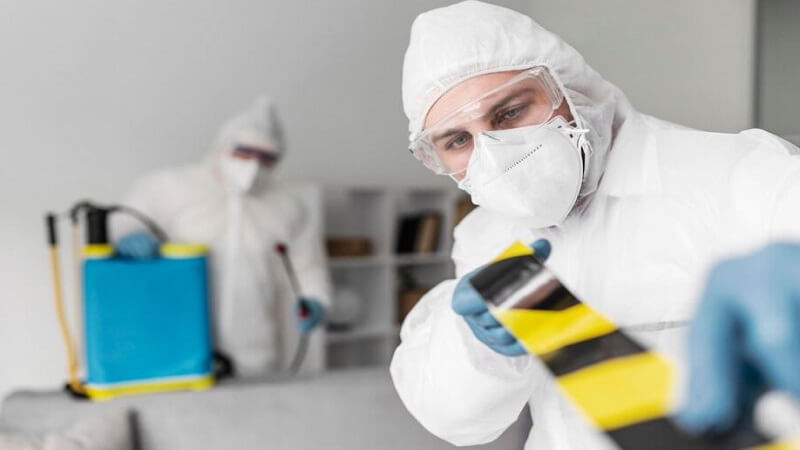The domestic environment is designed to be a haven; a place where you can relax, feel safe, and live comfortably. However, there are rare and distressing instances when a home can become a source of serious danger. Understanding biohazardous homes is crucial in these situations, as they are environments that harbor biological substances that can pose significant risks to human health. Cleaning such spaces demands specialized knowledge, careful attention, and a strict protocol to ensure safety. This comprehensive guide will walk you through the steps for safely and effectively cleaning a biohazard home.
Understanding Biohazardous Homes
Biohazardous homes are properties where dangerous biological substances are present. These hazards, also known as ‘biohazards,’ can range from human body fluids and tissues to harmful pathogens such as viruses, bacteria, and fungi. Common causes of biohazards include unattended deaths, crime scenes, hoarding situations, sewage leaks, or the presence of infectious diseases like COVID-19. Other potential biohazards include rodent infestations, mold, and chemical spills. The presence of these hazards can make a home unsafe to live in, requiring prompt and thorough cleaning to remove the risk.
Before attempting to clean a biohazard home, it is critical to understand the specific risks involved. Knowing what type of biohazard is present will allow you to take the necessary precautions to protect yourself and others during the cleanup.
Preparation: What You Will Need
Preparation is key to safely and effectively cleaning a biohazard home. The following essential equipment and supplies will be required:
- Personal Protective Equipment (PPE): This includes gloves, coveralls, boots, face shields, goggles, and a respirator or mask. PPE protects against exposure to dangerous pathogens and chemicals.
- Disinfectants: Professional-grade disinfectants or bleach solutions are necessary for killing bacteria, viruses, and fungi.
- Cleaning Supplies: Mops, brushes, buckets, and cloths will be needed for surface cleaning.
- Biohazard Waste Containers: Secure bags or containers are needed to dispose of hazardous waste properly.
- Decontamination Solutions: Specialized solutions are used to clean and sanitize tools and surfaces after the removal of visible contaminants.
Steps for Cleaning a Biohazard Home
1. Identify All Biohazards
Begin by identifying all potential sources of biohazards in the home. Check every room, paying special attention to areas where hazardous substances are likely to accumulate, such as bathrooms, kitchens, basements, or storage areas. Biohazards may be hidden in corners, under furniture, or in places that aren’t immediately visible.
2. Wear Personal Protective Equipment (PPE)
Before you start cleaning, equip yourself with the necessary PPE. Proper protection is crucial to avoid direct contact with harmful substances. Gloves, a protective suit, and respiratory protection are the bare minimum. Ensure your skin is covered entirely, and your breathing is protected from inhaling airborne contaminants.
3. Clean Visible Biohazard Materials
Remove any visible biohazardous waste, such as blood, bodily fluids, or other contaminants. Use disposable cloths and mops soaked in disinfectant to wipe surfaces. Biohazardous materials should be placed immediately into a secure biohazard waste bag or container. Be meticulous about removing all visible debris before proceeding to the next step.
4. Deep Clean the Area
Once the visible waste has been removed, conduct a deep cleaning. Use professional-grade cleaning solutions to scrub surfaces thoroughly, ensuring that any remnants of pathogens are eradicated. Pay special attention to porous materials such as carpets, mattresses, or soft furniture, as they can absorb biohazardous materials and may require professional cleaning or disposal.
5. Disinfect the Area

After deep cleaning, it’s essential to disinfect the entire area to eliminate any remaining microscopic pathogens. Use a hospital-grade disinfectant, applying it generously to all surfaces. This step is crucial in ensuring that the area is safe for future occupancy. Allow the disinfectant to sit for the recommended time before wiping it down.
6. Proper Disposal of Biohazardous Waste
Dispose of all biohazardous materials in accordance with local regulations. Most cities have specific guidelines on how to dispose of biological waste. All contaminated cleaning materials, PPE, and visible biohazards must be securely bagged and labeled before being transported to a proper disposal facility. Never dispose of biohazard waste in regular trash bins.
Post-Cleaning Measures
Once you’ve completed the cleaning process, conduct a thorough inspection of the property. Check for any missed biohazardous materials and clean those areas again if necessary. Certain items, like carpets, upholstered furniture, or mattresses, may be too contaminated to clean and should be replaced. In some cases, air ducts or HVAC systems may also need to be cleaned if they have been exposed to airborne pathogens or contaminants.
Getting Professional Help
Cleaning a biohazard home is a highly specialized task that can be overwhelming for most individuals. In many cases, professional assistance is necessary to ensure the job is done safely and effectively. Professional biohazard cleanup companies are trained to handle these situations with advanced cleaning equipment, expertise, and proper disposal techniques. They can also provide certification that the home has been thoroughly decontaminated, which can be important for insurance or legal reasons.
